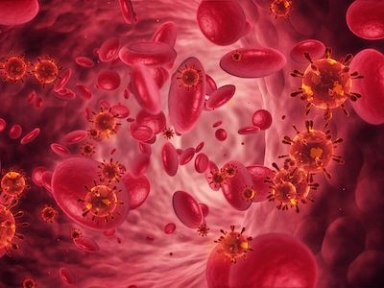{
event: "article_read",
name: `Risk for VTE is higher in emergency surgery than elective procedures`,
author: ``,
tags: `Cardiovascular | Thrombosis`,
publication_date: ``,
interaction_type: "content"
}
Risk for VTE is higher in emergency surgery than elective procedures
More invasive surgery is associated with a higher rate of VTE.
In the GAPS non-inferiority randomized controlled trial (RCT) in elective surgical inpatients at moderate or high risk of venous thromboembolism (VTE), administration of pharmacological thromboprophylaxis alone was non-inferior to a combination of pharmacological thromboprophylaxis plus graduated compression stockings (GCS).
Main Takeaway
- The risk for venous thromboembolism (VTE) is significantly higher with emergency general surgery than elective surgery.
- Emergency surgery and procedures with increased invasiveness are associated with significant risk for VTE.
Why This Matters
- This is the first study to compare the rate of VTE in the emergency surgery compared with the same operations performed electively.
- Surgeons and hospitals should promote research and quality improvement processes aimed at patients undergoing elective surgery to prevent and mitigate VTE.
- A more aggressive VTE chemoprophylaxis regimen may be considered for emergency and more invasive surgery.
Study Design
- A retrospective cohort study of 604,537 patients from the American College of Surgeons National Surgical Quality Improvement Program database.
- Patients underwent cholecystectomies (n=285,847), ventral hernia repairs (VHRs; n=158,500) and partial colectomies (PCs; 160,190) during 2005-2016.
- Primary outcome was VTE at 30 days
- Funding: None disclosed.
Key Results
- Mean age was 55.3 years.
- Of the procedures, 57.3% were performed laparoscopically.
- Overall rate of VTE within 30 days was 1.1% (deep vein thrombosis [DVT], 0.8% and pulmonary embolism [PE], 0.4%).
- The rate of VTE within 30 days was 1.9% for emergency surgery and 0.8% for elective surgery (P<0.001).
- At 30 days, emergency vs. elective showed significantly higher rate of:
- DVT: 1.4% vs. 0.5% (P<0.001)
- PE: 0.6% vs. 0.3% (P<0.001).
- The rate of VTE was 0.4% for laparoscopic surgery and 2.0% for open surgery.
- The rate of VTE increased with increasing invasiveness of surgery (0.5% for cholecystectomy, 0.8% for VHR and 2.4% for PC; P<0.001).
- The 30-day mortality rate was 9 times higher in patients undergoing emergency vs. elective surgery (3.6% vs. 0.4%; P<0.001).
- On multivariable analysis, independent risk factors for VTE were:
- Emergency general surgery (OR, 1.70; 95% CI, 1.61-1.79; P<0.001);
- Open surgery (OR, 3.38; 95% CI, 3.15-3.63; P<0.001); and
- PC (OR, 1.86; 95% CI, 1.73-1.99; P<0.001).
Limitations
- Retrospective design.
- The database represents only a sample of procedures performed and therefore, the findings may not be generalisable.
- VTE chemoprophylaxis adherence, dosing or the type of anticoagulants used were not known.
- Information on specific practice locations or facility types was not available
- Ross SW, Kuhlenschmidt KM, Kubasiak JC, Mossler LE, Taveras LR, Shoultz TH, Phelan HA, Reinke CE, Cripps MW. Association of the Risk of a Venous Thromboembolic Event in Emergency vs Elective General Surgery. JAMA Surg. 2020 Apr 29 [Epub ahead of print]. doi: 10.1001/jamasurg.2020.0433. PMID: 32347908
Related articles
MAT-BH-2100645/v2/Jun 2023


.png/jcr:content/MEDENOX-study-summary%20(1).png)

